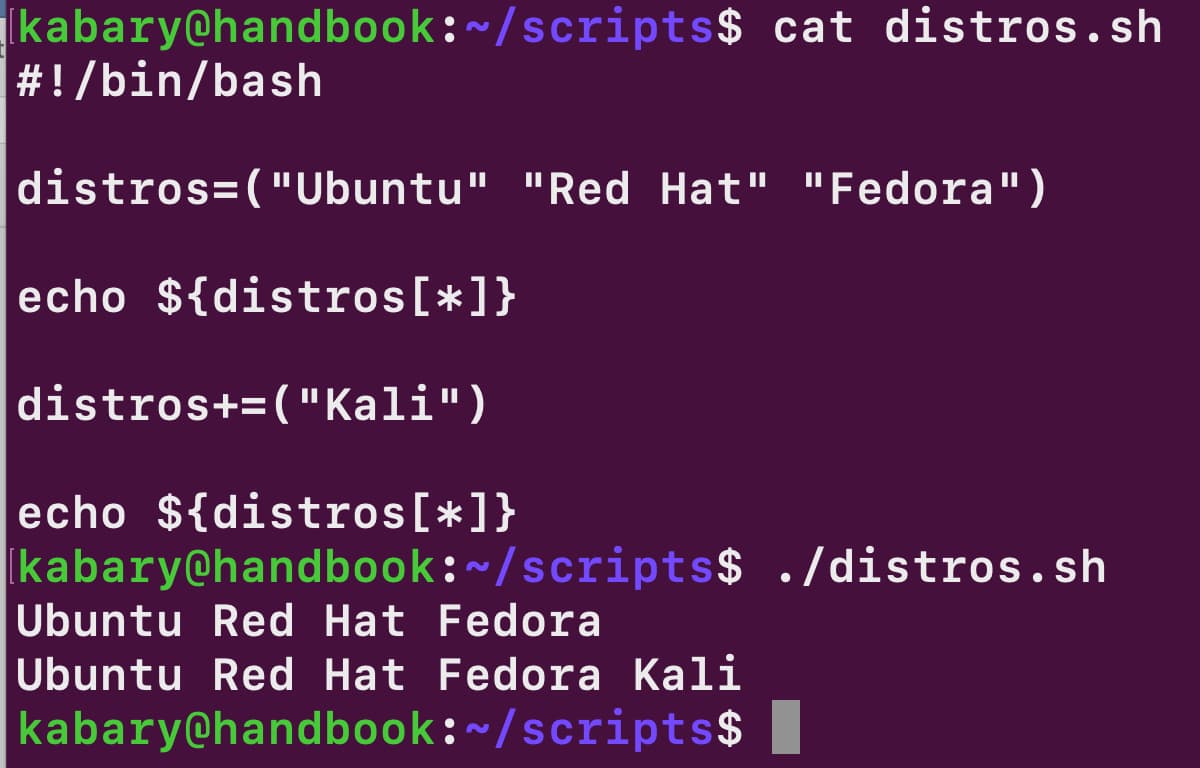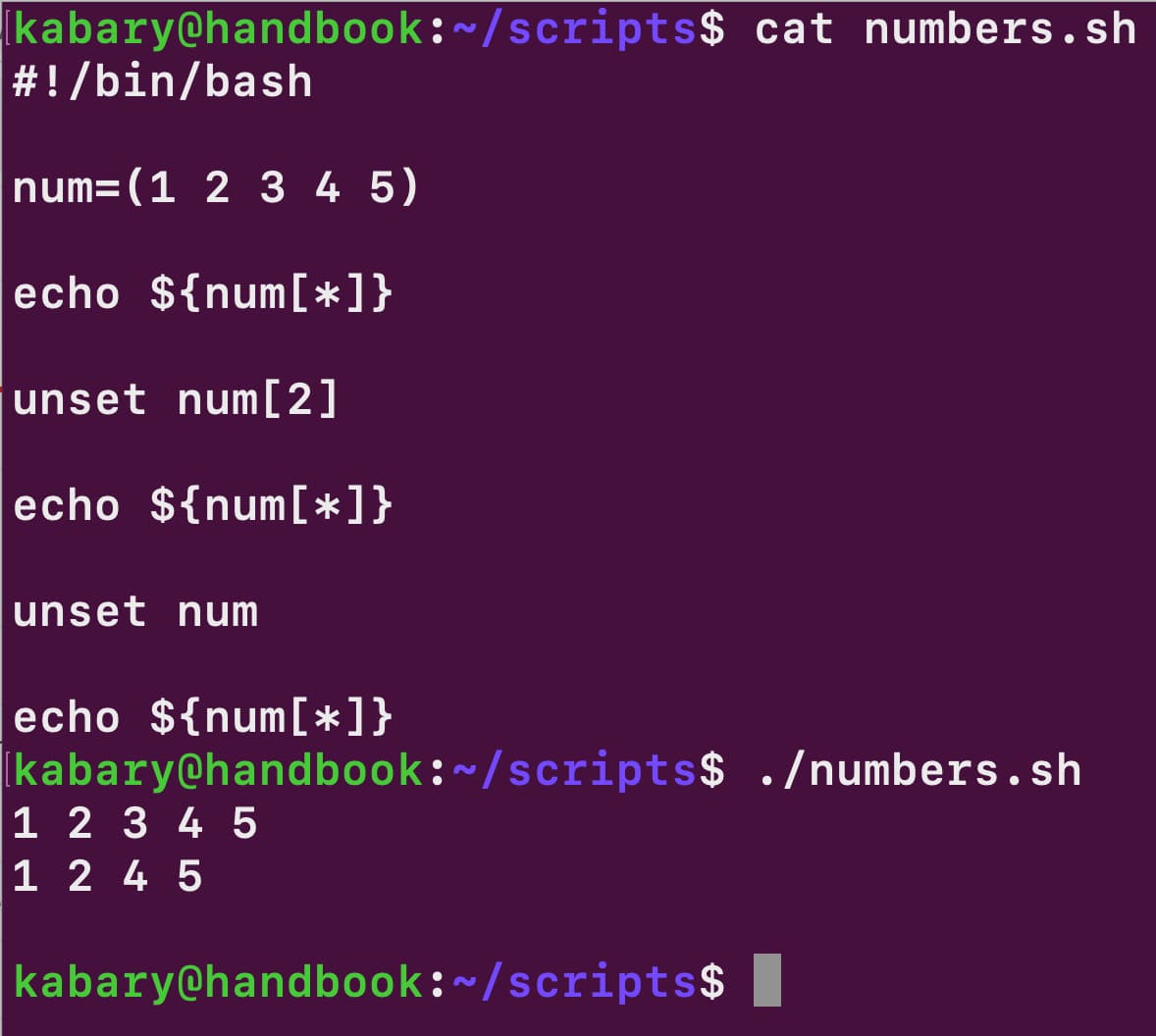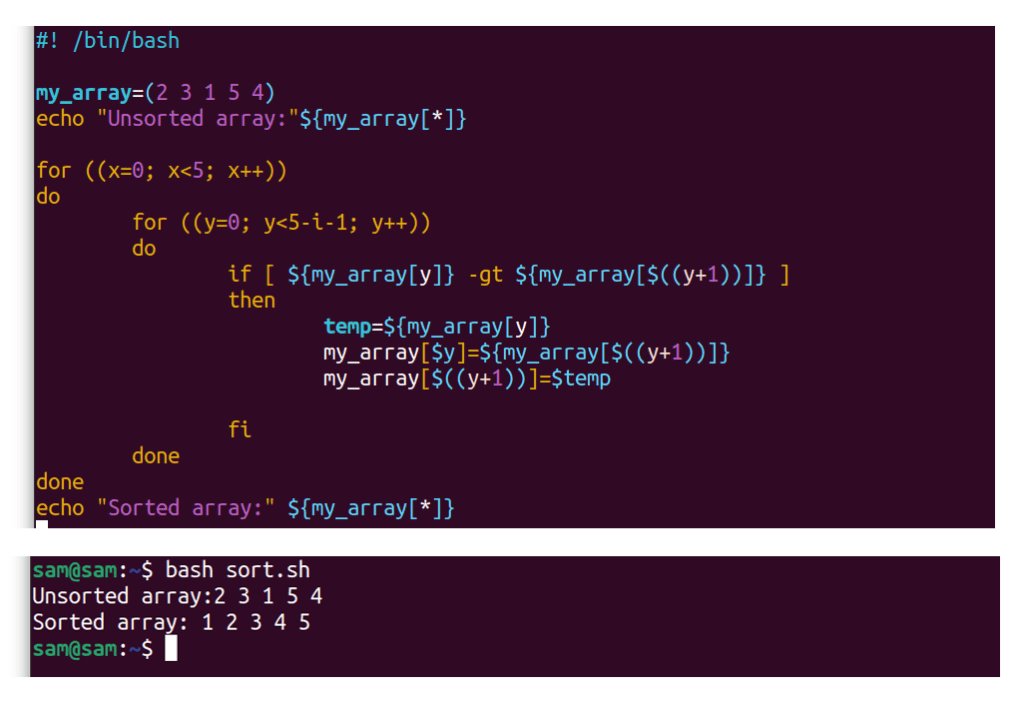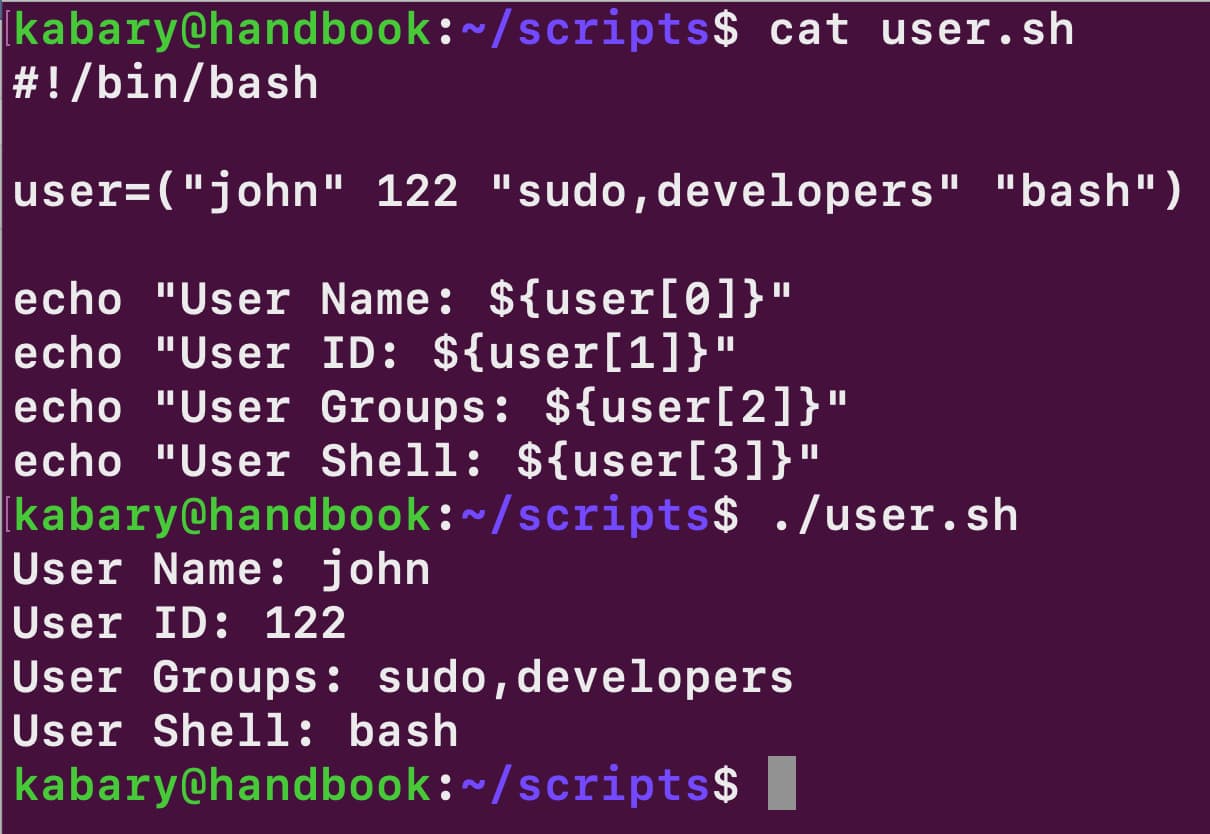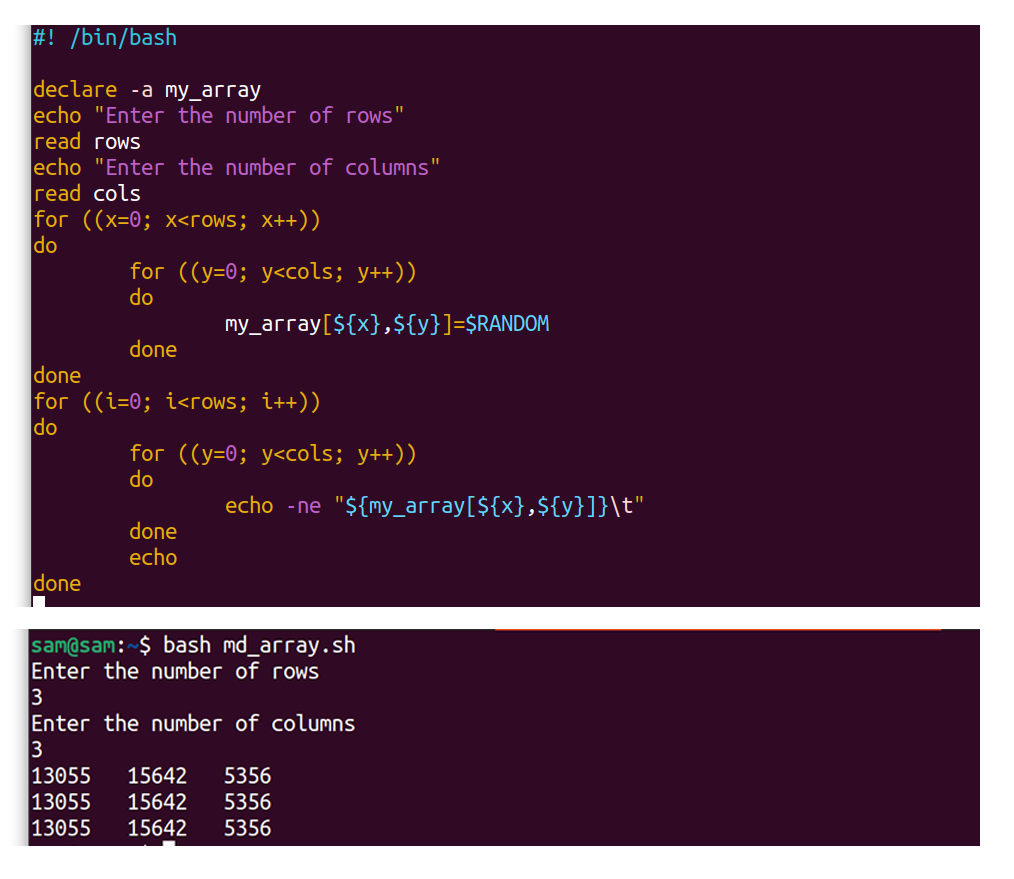Bash Read Array From File
Bash Read Array From File - Now you can easily read contents into the array. Web readarray will create an array where each element of the array is a line in the input. Do arr+=($line) done < file in case the file has an incomplete (missing newline) last line, you could use. Instead of using multiple variables, you can use arrays in bash to store values in the same category. Prompt$ echo ${#arr[@]} 5 prompt$ echo ${arr[@]:0} a bc d e f prompt$ echo ${arr[2]} d prompt$ echo ${arr[3]} e i'm using the default ifs setting: Web the <(.) section enables us to specify the tail command and lets bash read from its output like a file: Say i have two files. /path/to/config is the best approach for setting defaults, but if you need to set lines of a file to an array variable (as your question title suggests), bash 4.0 has new builtin commands called. Web the following bash script reverse.sh would print out all the five values in your files array in reversed order, starting with the last array element: An example of this method i use to read test files into an array would be:
Web bash readarray from bash version 4, storing the contents in an array has become straightforward. It can also be read from the file. Prompt$ echo ${#arr[@]} 5 prompt$ echo ${arr[@]:0} a bc d e f prompt$ echo ${arr[2]} d prompt$ echo ${arr[3]} e i'm using the default ifs setting: Web readarray will create an array where each element of the array is a line in the input. The terminal returns to its normal state. Write the command and press enter: /path/to/config is the best approach for setting defaults, but if you need to set lines of a file to an array variable (as your question title suggests), bash 4.0 has new builtin commands called. Do arr+=($line) done < file in case the file has an incomplete (missing newline) last line, you could use. Using arrays in bash scripts. ${array_name[n]} like most other programming languages, the array.
It can also be read from the file. Do arr+= ($line) done <<strong>file</strong> got any bash. Web the <(.) section enables us to specify the tail command and lets bash read from its output like a file: The terminal returns to its normal state. An example of this method i use to read test files into an array would be: Distros=(ubuntu fedora suse arch linux nix) to access an element, use: ${array_name[n]} like most other programming languages, the array. Echo $reply the $reply variable stores the read. #!/bin/bash files= (f1.txt f2.txt f3.txt f4.txt f5.txt) echo $ {files [4]} echo $ {files [3]} echo $ {files [2]} echo $ {files [1]} echo $ {files. Now you can easily read contents into the array.
How to Use Arrays in Bash Shell Scripts
Type a sentence and press enter. Web using read or mapfile, we can declare and populate a bash array in one go. Web 1 answer sorted by: The most reliable way to get a list of files is with a shell wildcard: Web the <(.) section enables us to specify the tail command and lets bash read from its output.
BASH SCRIPTING TUTORIAL 6 CREATING AN ARRAY YouTube
Web the <(.) section enables us to specify the tail command and lets bash read from its output like a file: Instead of using multiple variables, you can use arrays in bash to store values in the same category. Say i have two files. Read the prompt waits for the user input. Overview when we write shell scripts, we often.
BASH tutorials Arrays YouTube
Read the prompt waits for the user input. Web readarray will create an array where each element of the array is a line in the input. Echo ${myarray[@]} as echo $myarray will only output myarray[0], and. Web in a question titled bash reading txt file and storing in array i feel readarray deserves a mention. Do arr+=($line) done < file.
How to Use Arrays in Bash Shell Scripts
Web in a question titled bash reading txt file and storing in array i feel readarray deserves a mention. Using arrays in bash scripts. You can declare an array like this: The readarray utility simply read lines from the standard input into the indexed array. Parsing csv file into a bash array.
Full Guide to Bash Arrays
Parsing csv file into a bash array. Distros=(ubuntu fedora suse arch linux nix) to access an element, use: If you want to see the whole array you need to use. (the ifs value determines the delimiter, which is whitespace by default.) the array. There may be cases where we prefer to map the entire csv file into an array.
How to Use Arrays in Bash Shell Scripts
If you want to see the whole array you need to use. Write the command and press enter: The most reliable way to get a list of files is with a shell wildcard: Web 1 answer sorted by: Web the <(.) section enables us to specify the tail command and lets bash read from its output like a file:
How To Store Values In An Array Using BASH Shell Script Siytek
But i can't figure out why readarray isn't reading the find output as it's piped into it. We can then use the array. Web using read or mapfile, we can declare and populate a bash array in one go. Using arrays in bash scripts. ${array_name[n]} like most other programming languages, the array.
Creating basic indexed Bash array YouTube
The terminal returns to its normal state. Do arr+= ($line) done <<strong>file</strong> got any bash. Read the prompt waits for the user input. Distros=(ubuntu fedora suse arch linux nix) to access an element, use: Web using read or mapfile, we can declare and populate a bash array in one go.
Bash Basics How to use read command on Linux YouTube
But i can't figure out why readarray isn't reading the find output as it's piped into it. Write the command and press enter: Read the prompt waits for the user input. The most reliable way to get a list of files is with a shell wildcard: (the ifs value determines the delimiter, which is whitespace by default.) the array.
Full Guide to Bash Arrays
Overview when we write shell scripts, we often call a command and save the output into a variable for further processing. The most reliable way to get a list of files is with a shell wildcard: Web if you have an older version of bash, you can use a loop to read the file into an array: Write the command.
Do Arr+=($Line) Done < File In Case The File Has An Incomplete (Missing Newline) Last Line, You Could Use.
Write the command and press enter: Web the <(.) section enables us to specify the tail command and lets bash read from its output like a file: If you want to see the whole array you need to use. Prompt$ echo ${#arr[@]} 5 prompt$ echo ${arr[@]:0} a bc d e f prompt$ echo ${arr[2]} d prompt$ echo ${arr[3]} e i'm using the default ifs setting:
Using Arrays In Bash Scripts.
Web readarray will create an array where each element of the array is a line in the input. An example of this method i use to read test files into an array would be: ${array_name[n]} like most other programming languages, the array. You can declare an array like this:
Web Using Read Or Mapfile, We Can Declare And Populate A Bash Array In One Go.
Overview when we write shell scripts, we often call a command and save the output into a variable for further processing. Distros=(ubuntu fedora suse arch linux nix) to access an element, use: Do arr+= ($line) done <<strong>file</strong> got any bash. /path/to/config is the best approach for setting defaults, but if you need to set lines of a file to an array variable (as your question title suggests), bash 4.0 has new builtin commands called.
Instead Of Using Multiple Variables, You Can Use Arrays In Bash To Store Values In The Same Category.
Web if you have an older version of bash, you can use a loop to read the file into an array: There may be cases where we prefer to map the entire csv file into an array. Say i have two files. Retrieve the message with the echo command:
